August 22, 2010, 21:04:00 GMT
permalink Post: 5886174
And I enjoy answering those questions, if and whenever I can!
It was one reason why, when Air France withdrew an aircraft from service, Fox Delta was the first one to go.
Also, due to the gradual improvements in production methods, and minor redesign, the last British production Concorde, G-BOAF, was about a ton lighter than the first one (G-BOAC). While the differences weren't huge, they were noticeable.
According to 'Wikipedia', 67 engines were built, which would mean, in theory , 64 engines for 16 aircraft and 3 spares....
In practice, of course, fewer aircraft flew at any one time, so the statistics are different, but even so, a lot of engine swapping went on over the years.
As to the MTBO, I don't know... it's not my field at all....
Subjects
British Airways
Dakar
F-BVFD
Fuel Burn
G-BOAC
G-BOAF
Links are to this post in the relevant subject page so that this post can be seen in context.
Reply to this quoting this original post. You need to be logged in. Not available on closed threads.
August 22, 2010, 21:12:00 GMT
permalink Post: 5886186
That would have been about Mach 3 !!!!!!
(Without taking head or tail wind into account.)
Subjects: None
No recorded likes for this post (could be before pprune supported 'likes').Reply to this quoting this original post. You need to be logged in. Not available on closed threads.
August 22, 2010, 22:54:00 GMT
permalink Post: 5886324
But in brief, F-BVFD made an extremely hard landing at Dakar in November 1977, with a vertical speed in the order of 14 ft/sec (with 10 ft/sec being the formal limit).
The result was a major tailstrike, ruining the tail wheel and some of the tail structure.
The aircraft was repaired, repatriated, and put back into service, but it was the first one to be withdrawn from service when the Paris-Dakar-Rio route was closed.
In the end it was scrapped in 1994... only a section of the forward fuselage still remains in the stores of the Air and Space Museum at Le Bourget (Paris).
Subjects
Dakar
F-BVFD
Le Bourget
Links are to this post in the relevant subject page so that this post can be seen in context.
Reply to this quoting this original post. You need to be logged in. Not available on closed threads.
August 24, 2010, 15:25:00 GMT
permalink Post: 5889619
Thanks for bringing up the story of the temperature shears at low latitudes, saves me some explaining !
The phenomenon was not really "discovered" until the route proving started.
As you say, it meant abrupt changes in Mach and Tt.
Since the pitch autopilot in, say, 'Mach Hold', had only one way to cope with those changes : pitching up or pitching down, this resulted in abrupt climb and descent manoeuvres that were totally inacceptable.
It was not only fixed by modifiying the intake controls.... !
It also led to a fairly major mod in the AFCS, by bringing the auto-throttle into the loop.
Instead of letting the pitch A/P take the aircraft into a zoom climb to try and stay within the "speed limits", it woold be the autothrottle pulling the throttles back.
After a fair amount of flight tests, this became the final form of the 'Max Cruise' mode.
I know... I should have kept a diary.
All this happened 35 years ago, so I can't put exact dates, or even specific aircraft, into the story. At least I still have some Concorde doc, that at times allows me to refresh my memory.
But one thing stayed in my memory over the years ...
The initial A/P+A/T 'Max Cruise' mod meant a major modification of the autothrottle computers. One of the circuit boards in particular was totally "butchered" on-site (Fairford), with well over a hundred track cuts and new wire links, not to mention the number of component changes (to give an idea to the 'experts', these were double-sided PCBs of about 15x20cm).
We got the job done (4 boards : 2 boards per computer, 2 computers), got the computers tested and on the aircraft. Knowing full well how easy it was to introduce faults and problems during such a modification (a dud solder joint could be enough), we expected to see them back within days, or at least within a few flights.
Well..... those computers left the lab with each about a thousand hours "on the clock" (they have little elapsed-time counters that indicated hours under power, NOT flight hours).
The first time we saw them back (for a minor mod, not a fault), both clocks showed over 10,000 hours !
Ah, those were the days

CJ
Subjects
AFCS (Automtic Flight Control System)
Auto-pilot
Auto-throttle
Fairford
Intakes
Temperature Shear
Links are to this post in the relevant subject page so that this post can be seen in context.
Reply to this quoting this original post. You need to be logged in. Not available on closed threads.
August 24, 2010, 15:56:00 GMT
permalink Post: 5889672
I think this is it....
YouTube - Concorde British Airways take-off
CJ
PS The YouTube legend says last t/o from Heathrow, obviously wrong.
Subjects
JFK
LHR
Links are to this post in the relevant subject page so that this post can be seen in context.
Reply to this quoting this original post. You need to be logged in. Not available on closed threads.
August 24, 2010, 22:09:00 GMT
permalink Post: 5890279
Concorde "B"
Concorde '217' would have been the 'prototype' for the 'B' version. Sadly it never happened.
Yes, there was some industrial espionage, and a Russian or two was arrested with microfilms of blueprints and a few components, in the best James Bond style (this was in France, BTW...).
Some "duff gen" may have been passed as well... although the main reason the Concordski failed was that they didn't really get some of the vital stuff sorted, with the subtlety of the wing shape and the intake controls being only a few of the examples.
To my mind, the best story (urban legend or not) was that a Russian got caught scraping tyre deposits off the runway after a few accelerate/stop tests. The sample was duly sent to Russia, mixed with chewing gum and a few other ingredients, and a certain amount of time is reputed to have been wasted tryng to reproduce the 'formula".....

Legend also has it, that the Russians at one point quite seriously inquired if they could buy the license to the intake control system.
Since at the time it would still have had quite significant military use as well, the answer was a very firm "njet" !
CJ
Subjects
Intakes
Tu-144
Links are to this post in the relevant subject page so that this post can be seen in context.
Reply to this quoting this original post. You need to be logged in. Not available on closed threads.
August 24, 2010, 22:11:00 GMT
permalink Post: 5890283
Thanks for your link to the video of the last JFK takeoff, with the full comentary.
CJ
Subjects
JFK
Links are to this post in the relevant subject page so that this post can be seen in context.
Reply to this quoting this original post. You need to be logged in. Not available on closed threads.
August 24, 2010, 23:00:00 GMT
permalink Post: 5890366
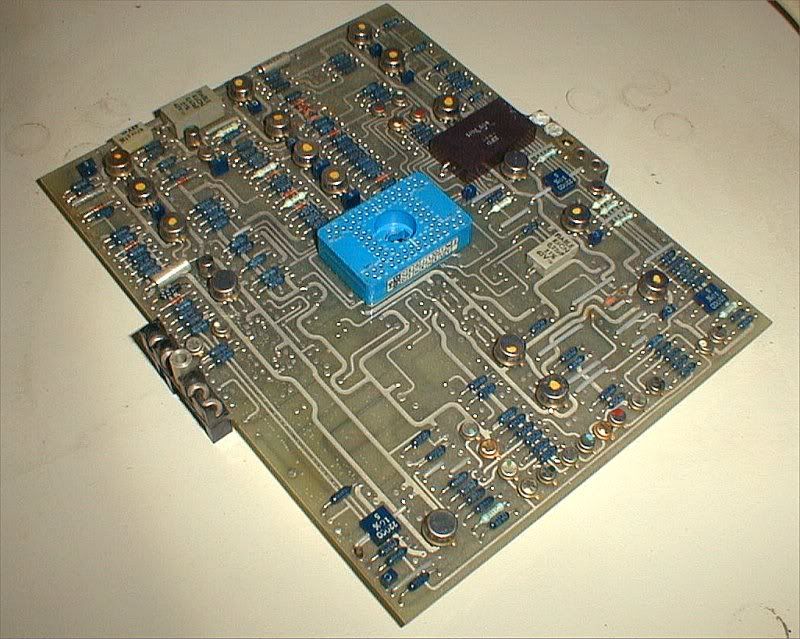
You were already working with advanced stuff, Roger...
The notorious AICU (air intake control unit) had something like 2 kilo bit RAM, and 42 512- bit PROMs on 5 boards. That's a grand total of 2688 bytes of program storage, look-up tables, etc.
I can only make a stab in the dark, but ... I would say (mentally totting up all the electronics boxes and weighing them) the electronics fit weighed in the order of a couple of tons (maybe somebody has a closer figure?). So on an aircraft of 185T TOW, even if you could bring that down to a quarter of that weight, you'd gain less than 1%.
How much more capable?
Concorde did fine, so what more capability do you want ?
Seriously, you would have a glass cockpit, which would make nav etc. easier.
And of course you would be able to get rid of the flight engineer and his panel, so that would be a few more hundred kilos.... beer and all.
Where an electronics update would make a difference would be in the amount of aircraft wiring. In the olden days, every single signal had its own bit of wire... now everything passes via digital 'buses', where dozens of signals are transmitted over a single twisted pair.
For the computer and electronics buffs among you : it's the difference between the old Centronics printer interface, where every signal has its own wire, and todays USB.
CJ
Subjects
AICU (Air Intake Control Computer)
Auto-throttle
Intakes
Links are to this post in the relevant subject page so that this post can be seen in context.
Reply to this quoting this original post. You need to be logged in. Not available on closed threads.
August 25, 2010, 15:30:00 GMT
permalink Post: 5891668
I have the rare privilege of actually having one of those rare "secret" air intake computers (AICU) sitting right next to my desk.
The circuit boards are mostly quite neat, with only the odd wire strap here and there.
However, the wiring of the unit itself, between the connectors, is a nightmare.
This is one of the PROM boards from the AICU, with one of the PROMs taken out of its socket. I have more photos, but will have to download those first, if anyone is interested.
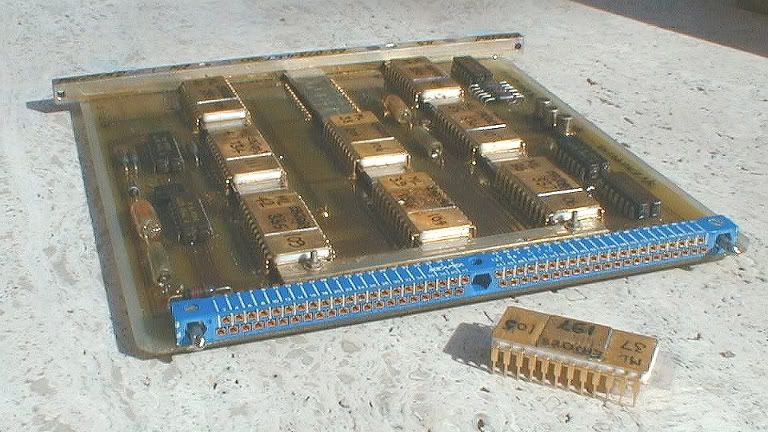
Landroger
Don't forget that all the computing in the AFCS computers was analog, not digital!
The vast majority were LM101As, with 741s in non-critical locations, and the odd LM108 for the really hiigh-precision stuff.
We did not always do the kind of "butcher job" I described for the A/T. If there was enough time between major mods, the "firm" would redesign the board(s) and send us a new set, and the old ones would be binned... it made for better reliability. I kept a few as souvenirs.
It's the big blue "thing" at the centre of the board, with no less than 80 pins.
This is the back of the card
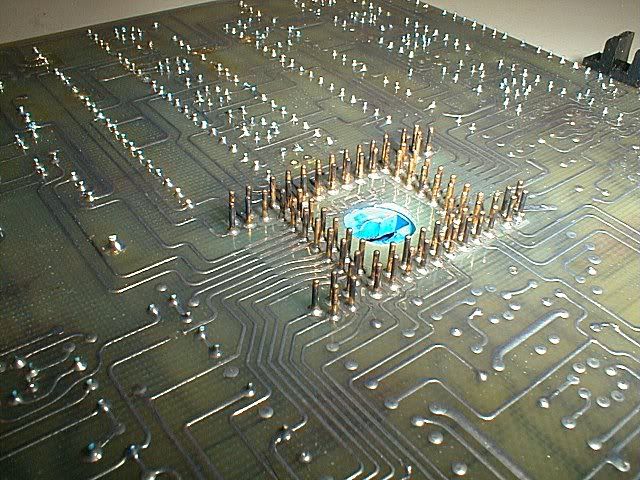
This is the central connector closer up
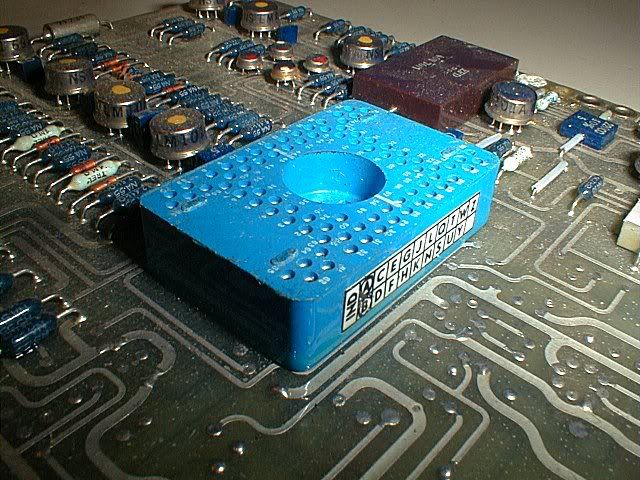
The idea wasn't bad at first sight.... it allowed stacking three boards on top of each other, so that many signals could pass from one board to another without any intermediate wiring. A small motherboard with a fourth conector would then take certain signals to other stacks, etc.
Another claimed advantage was that it made the board layout easier.
What was learned only gradually was that those connectors were hideously difficult to solder in place, and even more difficult to repair. Concorde was too far "on the way" to redesign the entire AFCS, so we learned to live with them, but the concept was abandoned afterwards.
The central connectors were only used for the analog boards ; the logic boards used more conventional 84-pin connectors on one side.
This is one of the logic boards.
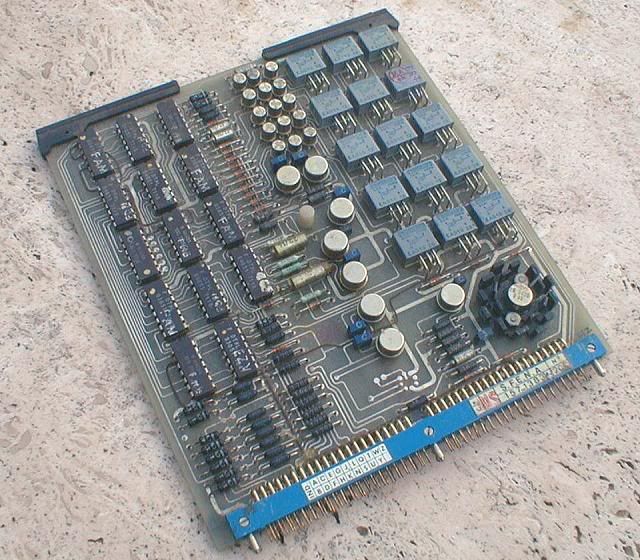
Re the weight question, I would say M2dude 's answer is a lot better than mine, so ignore my remarks.....
Re the wiring, Concorde had about 300km of it.
IIRC the A380 Flying Hippo, which is vastly bigger, "only" has about 500km of wiring, and it seems a lot of that is the IFE (in-flight entertainment)

CJ
Subjects
AFCS (Automtic Flight Control System)
AICU (Air Intake Control Computer)
Intakes
Links are to this post in the relevant subject page so that this post can be seen in context.
Reply to this quoting this original post. You need to be logged in. Not available on closed threads.
August 25, 2010, 15:57:00 GMT
permalink Post: 5891711
But you're right, nearly all of the mundane day-to-day design was with a slide rule, and pencil-and-paper.
I still remember how in about 1972 we had to start calculating the electric trim computer resistor values to 0.1% (rather than +-1%), so I bought my very first pocket calculator.... little red LED display, just the basic 4 functions. Cost \xa342, and those were 1972 pounds (what would the equivalent be today?). Luckily I could put it on my expense account ....
CJ
Subjects
Trim
Links are to this post in the relevant subject page so that this post can be seen in context.
Reply to this quoting this original post. You need to be logged in. Not available on closed threads.
August 25, 2010, 21:05:00 GMT
permalink Post: 5892328
The way I understood the story was that they tried to collect as many reasonably reliable spare AICUs for the last few delivery flights, so as not to have to suddenly cancel a flight.
The AICU was right at the top of the list of "unscheduled removals". IIRC the tea maker was second...
"... 'burning' each individual logic gate with a 9v battery." I believe you, thousands wouldn't... Didn't you have at least some sort of programming unit?
I went through a similar exercise around 1976, but at that time at least we had a programming "suitcase", that let you copy the original in RAM, modifiy bit-by-bit with a keyboard, then 'burn' the PROM (or EPROM, by then) 'automatically'. Still took half the night....
Funny in a way how these things have stuck in our memories... But then, yes, Concorde was unique.
I've said this elsewhere, but I don't mind repeating it... in those days, there were two programmes to be part of. One was Apollo, the other was Concorde. And I've had the chance to be part of one of them.
CJ
Subjects
ADC (Air Data Computer)
AICU (Air Intake Control Computer)
British Airways
Intakes
Links are to this post in the relevant subject page so that this post can be seen in context.
Reply to this quoting this original post. You need to be logged in. Not available on closed threads.
August 25, 2010, 22:17:00 GMT
permalink Post: 5892476
The prototypes used a SAGEM/Ferranti system, replaced by a Litton system on the preprods, then Delco on the production aircraft.
There may have been magnetic core in the prototype INS.
As to the AICS (air intakes) and AFCS (automatic flight control), the answer is a definite NO. The AICUs used PROMs (fuse type, not EPROM) and the AFCS was entirely analog.
Some of the systems were even more 'antique'...
The ADC (air data computer) for instance was still largely electro-mechanical.
And those nifty NAV and COMM frequency selectors, that always stand out on cockpit pictures... no electronics at all, just a set of wafer switches, and about thirty wires linking them to the transmitters/receivers.
CJ
Subjects
ADC (Air Data Computer)
AFCS (Automtic Flight Control System)
AICS (Air Intake Control System)
AICU (Air Intake Control Computer)
INS (Inertial Navigation System)
Intakes
Links are to this post in the relevant subject page so that this post can be seen in context.
Reply to this quoting this original post. You need to be logged in. Not available on closed threads.
August 25, 2010, 23:04:00 GMT
permalink Post: 5892595
Could be Autostab, Lateral Autopilot or Trim, since they all used exactly the same technology, board size, etc.
Looking at the board, I think it's 'Lat A/P' but I can't be certain.
No excuse needed about missing the "central connector" !
It was really a "one-off" feature, invented by Bendix, and abandoned afterwards. I'm not even sure the early A300B AFCS computers, that used much of the Concorde technology, still had them.
CJ
Subjects
AFCS (Automtic Flight Control System)
AICU (Air Intake Control Computer)
Auto-pilot
Auto-stabilisation
Trim
Links are to this post in the relevant subject page so that this post can be seen in context.
Reply to this quoting this original post. You need to be logged in. Not available on closed threads.
August 26, 2010, 14:27:00 GMT
permalink Post: 5893851
Most of my personal memories date from my Fairford years (1969 - 1974), so there may be the odd gap.....
CJ
Last edited by ChristiaanJ; 26th August 2010 at 14:52 . Reason: typo
Subjects
AFCS (Automtic Flight Control System)
Fairford
Links are to this post in the relevant subject page so that this post can be seen in context.
Reply to this quoting this original post. You need to be logged in. Not available on closed threads.
August 26, 2010, 16:43:00 GMT
permalink Post: 5894137
So the prototypes were equipped with "autorudder" computers. They used pressure sensors in the engines to detect engine failures, and they would then kick in a "pre-dosed" amount of rudder, that would then be "washed-out" gradually while the pilot dealt with the issue and added rudder trim.
They were manufactured by SFENA, and since I was their flight test support at Fairford, they became automatically my "babies".
The computers (analog, big boxes, the same size as the autopilots or air intake computers) were extremely reliable (we had only two passive faults during the entire flying career of 002).
Unfortunately the same could not be said of the pressure sensors, and since it was always easier to "pull" a computer than a pressure sensor, we found a computer on the bench every few weeks, which then had to be taken through a full test spec and sent back with "no fault found", before anybody was willing to look at the sensors.
Luckily a better solution was found, using a lateral accelerometer, and from the preprod aircraft onwards, each big separate autorudder computer was replaced by a single board tucked away in the autostab computer.
Since the function was always "on", there was no separate autorudder engage switch. Many years later, I discovered that several airline Concorde pilots did not even know the function existed....
CJ
Subjects
Auto-stabilisation
Engine Failure
Engine surge
Fairford
Intakes
Rudder
Trim
Links are to this post in the relevant subject page so that this post can be seen in context.
Reply to this quoting this original post. You need to be logged in. Not available on closed threads.
August 27, 2010, 14:46:00 GMT
permalink Post: 5896193
IIRC, Andr\xe9 Turcat remarked after the first flight of 001 it flew pretty well like the simulator, or if anything somewhat better!
For airline crew training , two new simulators were built in the early seventies, again one in Toulouse (later moved to CDG) and one in Filton.
In the best Concorde style, they were designed and built by two different firms....
I don't believe anything of the development simulators has survived.
As you will know, the "cab" of the British Airways Filton simulator was salvaged and taken to Brooklands, where it's now slowly being brought back to life.
The Air France simulator at CDG, minus motion system and video display, was taken back to Toulouse, where it's slowly being restored, to go on display in the planned Museum at Toulouse.
CJ
Subjects
Brooklands
CDG
Concorde Simulator
Filton
Simulator
Toulouse
Links are to this post in the relevant subject page so that this post can be seen in context.
Reply to this quoting this original post. You need to be logged in. Not available on closed threads.
August 27, 2010, 20:02:00 GMT
permalink Post: 5896747
There's a longer one with more of the story, but this is the essence.
TESGO is the designation of one of the waypoints on the Concorde route from CDG to JFK, shortly beyond the point where Concorde goe ssupersonic on its way over the Atlantic.
At the occasion of one of the last Air France CDG-JFK flights, a small group of French enthusiasts hired a boat to get a record of the overflight and the sonic bang, and they succeeded beyond expectations.
There can't be many Concorde friends, who haven't already seen this clip....
CJ
Subjects
CDG
JFK
Links are to this post in the relevant subject page so that this post can be seen in context.
Reply to this quoting this original post. You need to be logged in. Not available on closed threads.
August 27, 2010, 20:41:00 GMT
permalink Post: 5896805
Not exactly the same subject, but still brake-related.
Some of the earlier-mentioned items like "3-2-1-NOW", the little 3/4 tab for the afterburners, the "T/O monitor lights" and such, were all due to the fact that it was not possible to run up Concorde to full take-off thrust, light the reheats, check everything, and only then release the brakes.... she would start to slide forward well before full thrust was reached.
Only 185 tons TOW, only ten little wheels... in brief, not enough "grip" to keep almost 70 tons thrust stationary !
CJ
Subjects
Afterburner/Re-heat
Braking
Take-off Thrust
Links are to this post in the relevant subject page so that this post can be seen in context.
Reply to this quoting this original post. You need to be logged in. Not available on closed threads.
August 27, 2010, 22:39:00 GMT
permalink Post: 5896963
Of course you're right on all those items.
I only mentioned them as they were linked in some way to the fact of not being able to run up to full thrust "on the brakes".
CJ
Subjects
Braking
Links are to this post in the relevant subject page so that this post can be seen in context.
Reply to this quoting this original post. You need to be logged in. Not available on closed threads.
August 31, 2010, 13:54:00 GMT
permalink Post: 5903822
The Tu144D was the last production model of the Tu144.
With improved engines and other refinements, it was capable of supercruise (Mach 2 without afterburners). Only five were built, and they came too late ; the aircraft went out of service, and were put into storage.
Tu-144D s/n 77114 was brought out of mothballs (with less than 83 hours "on the clock") for the joint NASA/Russian program in the '90s and modified, with completely new more powerful engines (same as those of the 'Blackjack' Tu-160 bomber) and a fit of sensors and test equipment, to become the Tu-144LL (flying laboratory). A total of 27 flights were made.
The entire "High Speed Civil Transport" study indeed cost over $300M, but the actual work on the Tu-144LL reputedly cost less than $20M, although it's not known exactly what that bill represents.
CJ
Subjects
Super-cruise
Tu-144
Links are to this post in the relevant subject page so that this post can be seen in context.
Reply to this quoting this original post. You need to be logged in. Not available on closed threads.
 Our first minicomputers - to reconstruct the CT image - had 32
kilobytes
of memory on four boards, each about 17" square!!
Our first minicomputers - to reconstruct the CT image - had 32
kilobytes
of memory on four boards, each about 17" square!!
 I somehow thought it was a specific function chip or a development test socket. Some of those used to appear and remained on some of our boards.
I somehow thought it was a specific function chip or a development test socket. Some of those used to appear and remained on some of our boards.
